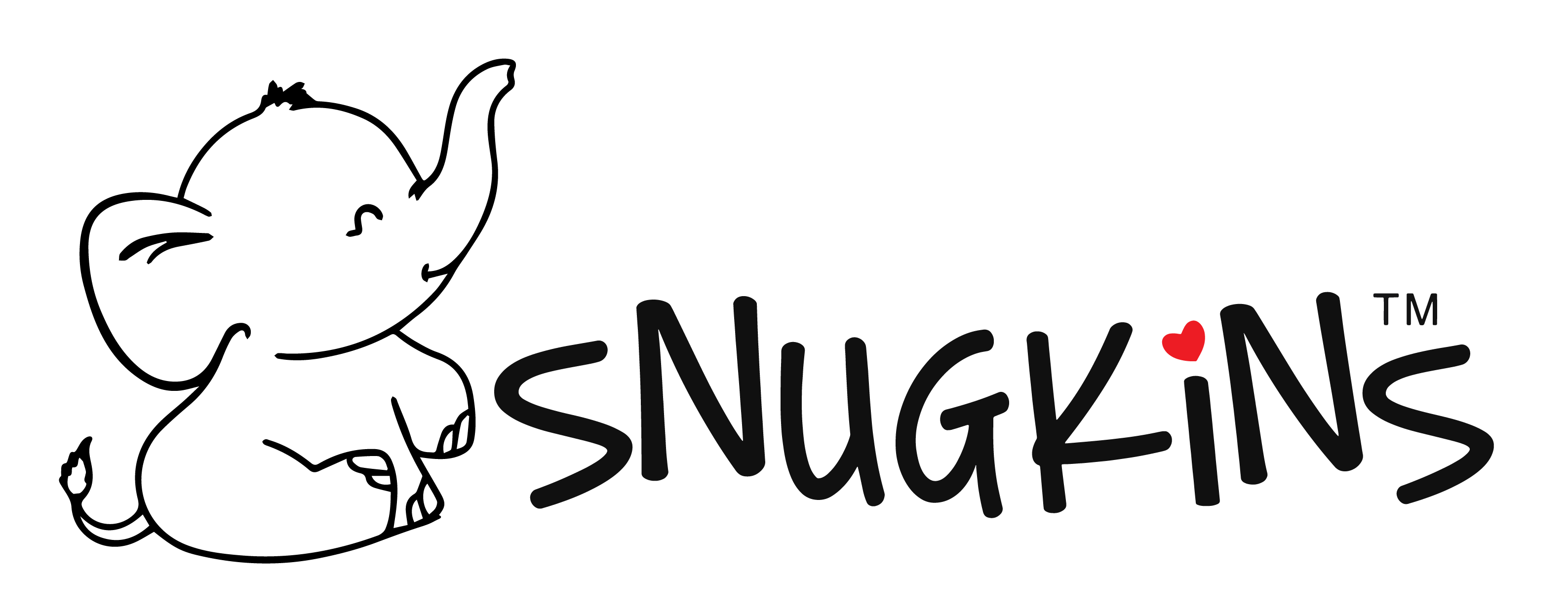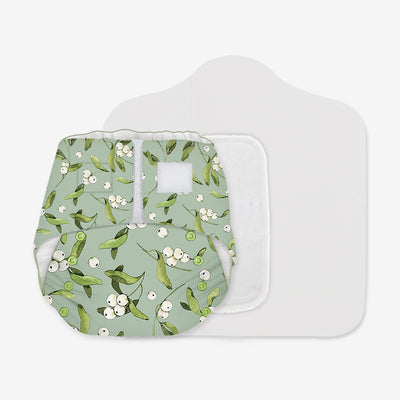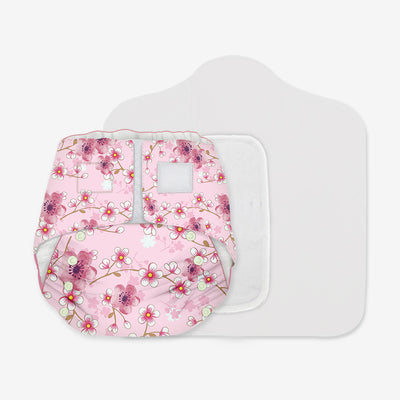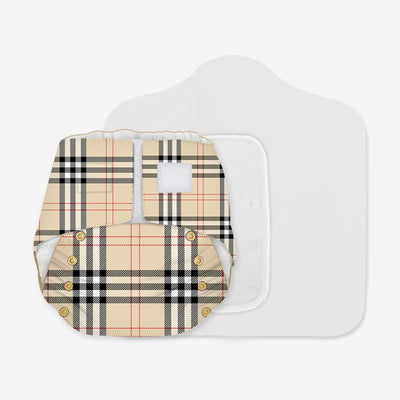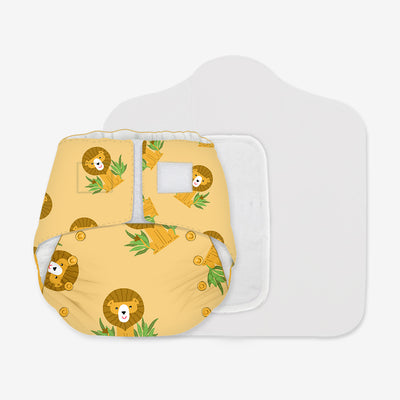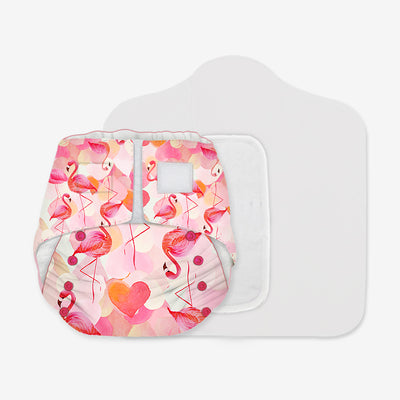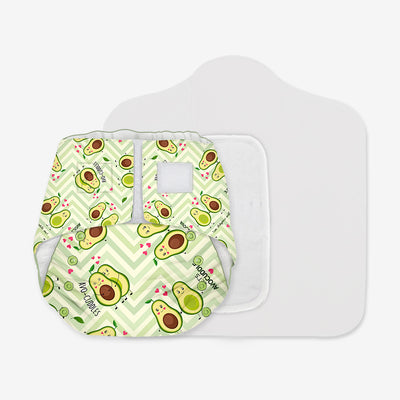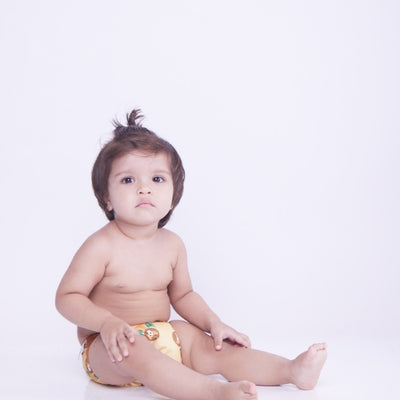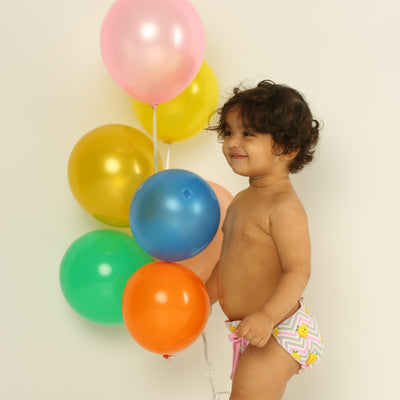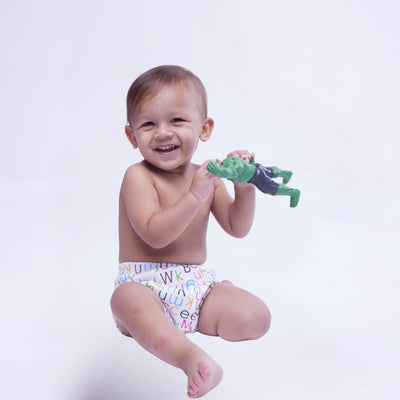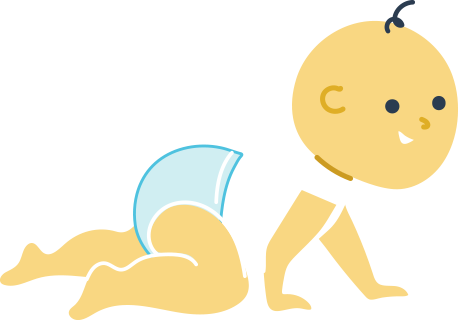Say Goodbye to Diapers: The Ultimate Guide to Potty Training Pants

Are you worn out by the endless diaper changes and the constant cycle of buying and tossing diapers?
Potty training can be a daunting task, but with the right tools and techniques, it can be a breeze. Our guide will walk you through the different types of potty training pants available, from cloth to disposable, and help you choose the best option for your child's needs. We'll also provide expert tips and strategies to make the potty training process smooth and stress-free.
Say goodbye to expensive and environmentally unfriendly diapers and hello to the convenience and independence that potty training pants offer. Whether you're just getting started or struggling with the potty training process, this guide has got you covered.
Benefits of using potty training pants
Toilet training pants offer a range of benefits that make the transition from diapers to the potty a more seamless and empowering experience for both you and your child. One of the primary advantages is the increased sense of independence and control that potty training pants provide. Unlike diapers, which can feel bulky and restrictive, potty training pants are designed to feel more like regular underwear, allowing your child to recognize the urge to go and encouraging them to take an active role in the process
Another significant benefit of potty training pants is the improved ease of use and convenience. Many parents opt for padded underwear as a helpful in-between option while transitioning to potty training pants. This type of potty training with pants ensures your child has some protection while still feeling wetness, which is essential for learning. This can be a game-changer for busy parents, as it reduces the time and effort required for frequent diaper changes. Additionally, potty training pants often feature easy-to-use fasteners or pull-up designs, making them more intuitive for your child to manage on their own, further promoting their independence and self-confidence.
When to start potty training
Determining the right time to start potty training can be a crucial decision, as every child's readiness and development timeline can vary. However, there are some general guidelines and signs to look for that can help you identify the optimal moment to begin the potty training process.
Typically, experts recommend starting potty training between the ages of 18 and 24 months. It falls within what many consider an ideal potty training age, as this is when most children begin to show signs of readiness, such as an increased awareness of their bodily functions and a desire to use the toilet. However, it's important to keep in mind that every child is unique, and some may be ready earlier or later than this suggested timeframe.
Some key indicators that your child may be ready for potty training include:
-
Staying dry for longer periods (at least 2 hours)
-
Demonstrating curiosity about the potty or expressing a willingness to try using the toilet.
-
Being able to pull their pants up and down with minimal assistance
-
Demonstrating the ability to follow simple instructions
-
Letting you know when they need to go to the bathroom
-
Showing discomfort when wearing a dirty or wet diaper
It's important to observe your child's cues and respond accordingly, as forcing potty training too early can lead to frustration and resistance. By waiting until your child exhibits these readiness signs, you'll be more likely to experience a smooth and successful transition from diapers to potty training pants.
Choosing the right potty training pants
Choosing the right potty training pants for your child is key to creating a positive and successful potty training experience. With a wide variety of options available, it's important to consider factors such as absorbency, fit, and ease of use to find the perfect fit for your little one.
One of the primary considerations when choosing potty training pants is the level of absorbency. While you want your child to feel the sensation of needing to use the restroom, you also want to ensure that any accidents are contained and don't cause a mess. Many parents opt for padded underwear during this stage, as it offers a comfortable, cloth-like feel with just enough absorbency to manage small accidents while still allowing your child to recognize the urge to go.
Fit is another crucial factor to consider. Potty training pants should be snug enough to stay in place but not so tight that they restrict movement or cause discomfort. Look for pants with adjustable waistbands or a range of sizes to ensure a customized fit for your child. Additionally, consider the leg openings and ensure they are wide enough to allow for easy removal and replacement during potty breaks.
Ease of use is also an important factor when selecting potty training pants. Look for designs that feature easy-to-use fasteners, such as Velcro or snap closures, which can make the process of removing and replacing the pants more straightforward for your child. Pull-up style pants can also be a great option, as they mimic the feel of regular underwear and allow your child to independently pull them up and down.
When it comes to the material of the potty training underwear, consider options that are breathable, durable, and easy to clean. Cotton or bamboo-based fabrics are often a great choice, as they are soft, comfortable, and can withstand multiple washes. Padded underwear made from these materials can provide both comfort and confidence during this transitional phase. Avoid materials that may feel overly bulky or restrictive, as this can hinder your child's natural movements and make the potty training process more challenging.
Introducing potty training pants to your child
Introducing potty training pants to your child can be an exciting and pivotal moment in their development.
Start by talking to your child about the transition from diapers to potty training pants. Explain in simple, age-appropriate language that they are now a "big kid" and get to wear special "underwear" that helps them use the potty. Involve your child in the process by allowing them to help pick out their new potty training pants, which can help build their excitement and ownership over the experience.
When it's time to begin using potty training pants, set aside dedicated moments for practice and positive reinforcement. Begin by having your child wear the new pants for short periods throughout the day, encouraging them to use the potty whenever they feel the urge. Celebrate and acknowledge their efforts, even if they don’t always make it to the potty in time. This positive reinforcement will help build their confidence and motivation to continue the process.
By introducing potty training with pants in a positive and supportive way, you can help your child feel empowered and excited about this important milestone. With patience, consistency, and plenty of encouragement, your little one will soon be on their way to mastering the use of potty training pants and ultimately, transitioning to regular underwear.
Potty training tips and techniques
Potty training can be a challenging and often frustrating process, but with the right tips and techniques, you can make it a smooth and successful experience for both you and your child. From establishing a consistent routine to offering engaging rewards, these strategies can help make the transition from diapers to potty training underwear a positive and empowering journey.
One of the most important tips for successful potty training is to establish a consistent routine. Designate specific times throughout the day when you'll encourage your child to try using the potty, such as after meals, upon waking up, or before naps. This consistency will help your little one understand the expectations and feel more secure in the process.
Incorporating visual aids and interactive elements can also be incredibly helpful in engaging your child during potty training. Consider using a colorful, child-friendly potty chair or stool that allows them to feel more in control and comfortable. You can also create a "potty chart" where your child can place stickers or mark their progress, which can serve as a motivating and rewarding tool.
Using positive reinforcement is essential for successful potty training. Celebrate and praise your child's successes, no matter how small, and offer age-appropriate rewards, such as stickers, small treats, or a special activity. This encouragement will help build their confidence and make the process feel more like a fun, rewarding experience rather than a chore.
Dealing with accidents during potty training
Accidents are a common and expected part of the potty training process, and it's important to approach them with patience, understanding, and a positive attitude. Responding to accidents with calmness and encouragement helps your child feel supported and stay motivated to keep progressing
When an accident occurs, resist the urge to scold or punish your child. Instead, remain calm and reassuring, and focus on the next steps. Gently guide your child to the bathroom, have them help you clean up the mess, and then encourage them to try using the potty again. Avoid making a big deal out of the accident, as this can create a negative association and potentially hinder their progress.
It's also important to have a plan in place for dealing with accidents, both at home and when you're out and about. Keep a change of clothes, extra potty training pants, and cleaning supplies on hand, so you're prepared to handle any unexpected situations. This can help reduce stress and ensure a smooth transition back to the potty training process.
If your child experiences a string of accidents or seems to be regressing in their progress, it's important to take a step back and evaluate the situation. Consider whether there have been any significant changes or stressors in your child's life that may be contributing to the setbacks. It's also a good idea to consult with your pediatrician or a potty training expert to get their advice and guidance on how to best support your child during this time.
Conclusion and final thoughts
From the benefits of using potty training pants to the strategies for a smooth transition, we've covered a comprehensive range of topics to help make your potty training journey a positive and empowering experience. Remember, every child's journey is unique, so be patient, adaptable, and willing to adjust your approach as needed.
As you begin this exciting new chapter, remember to celebrate your child’s achievements - no matter how small - and offer plenty of encouragement and support along the way. With the right mindset, the right tools, and consistent guidance, you and your little one can confidently say goodbye to diapers and welcome the freedom and independence that potty training pants bring.

